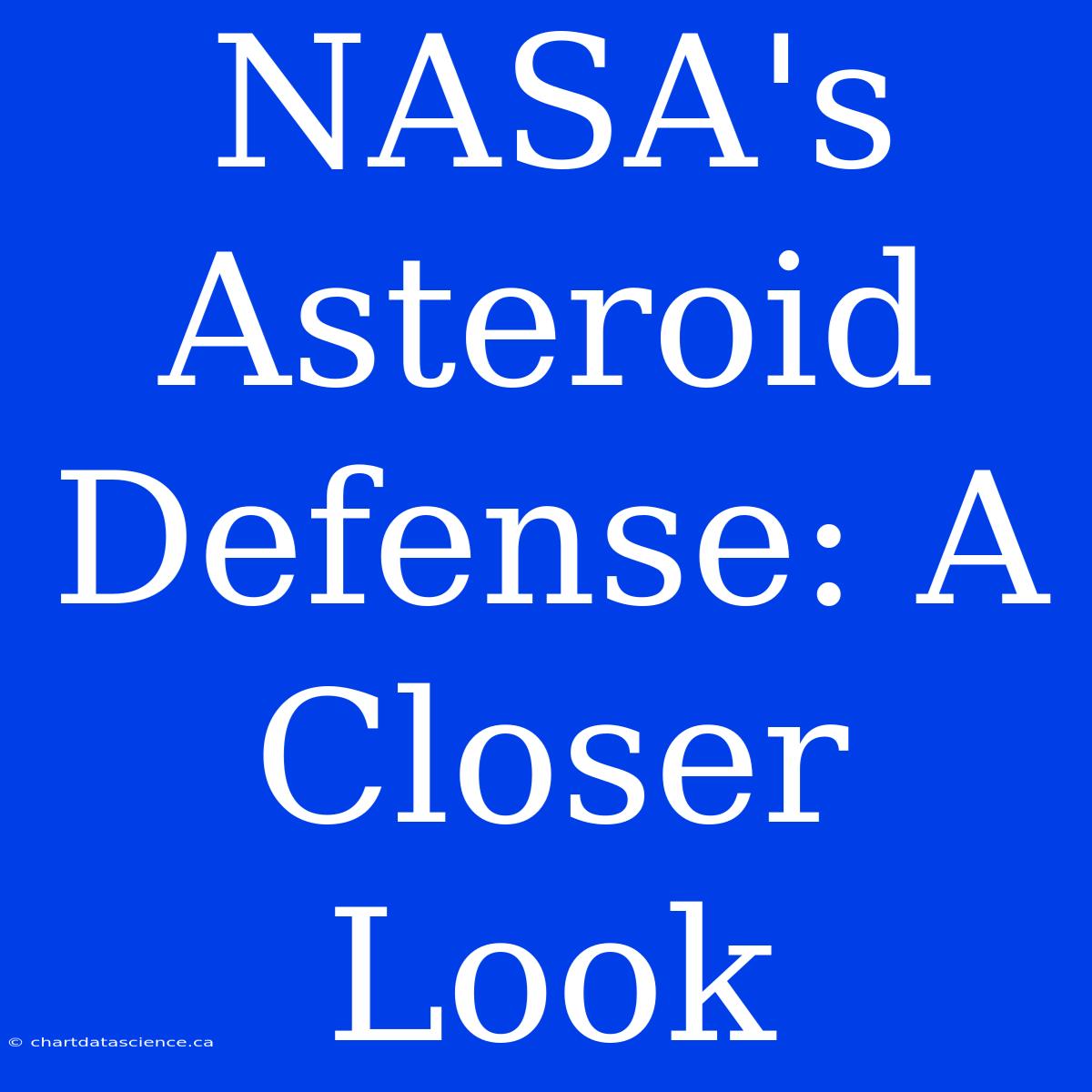NASA's Asteroid Defense: A Closer Look
The idea of a giant asteroid hurtling towards Earth, threatening to wipe out civilization, has captivated our imaginations for decades. Hollywood has painted a picture of impending doom, and while the chances of such a catastrophic event are thankfully low, the threat is real. Luckily, NASA is on the case, with a robust asteroid defense system to protect our planet.
What is NASA doing to defend us from asteroids?
NASA's asteroid defense strategy is two-pronged: detection and deflection.
1. Detection:
- Telescopes: NASA uses a network of ground-based telescopes and space-based telescopes like the Hubble Space Telescope to scan the skies for potentially hazardous asteroids.
- Near-Earth Object (NEO) Observations: Dedicated programs like the Center for Near-Earth Object Studies (CNEOS) track the orbits and potential impact risks of asteroids. This data is crucial for predicting future trajectories.
2. Deflection:
- DART Mission: The Double Asteroid Redirection Test (DART), launched in 2021, was a historic mission. It successfully impacted the asteroid Dimorphos, slightly changing its orbit, proving the viability of the kinetic impactor method.
- Future Missions: NASA is investigating other deflection techniques, including gravity tractors (using spacecraft to nudge an asteroid off course) and nuclear options (a last resort for larger, more dangerous asteroids).
What are the challenges?
- Early Detection: Smaller asteroids are harder to detect and could pose a surprise threat.
- Deflection Time: The amount of time required to successfully deflect an asteroid depends on its size and trajectory. For smaller asteroids, a quick response is crucial.
- Technology Development: Further research and development of more advanced deflection technologies are essential.
What does the future hold?
NASA is committed to ongoing asteroid detection and defense research. They aim to develop even more sophisticated systems and techniques to protect Earth from these celestial threats. The DART mission was a huge success and a critical step in the right direction.
In conclusion, NASA is actively safeguarding our planet from asteroids with a comprehensive strategy. While the threat remains, the agency's tireless efforts give us hope and reassurance. By continuing to invest in research and technology, we can ensure the future of our planet and humankind.

